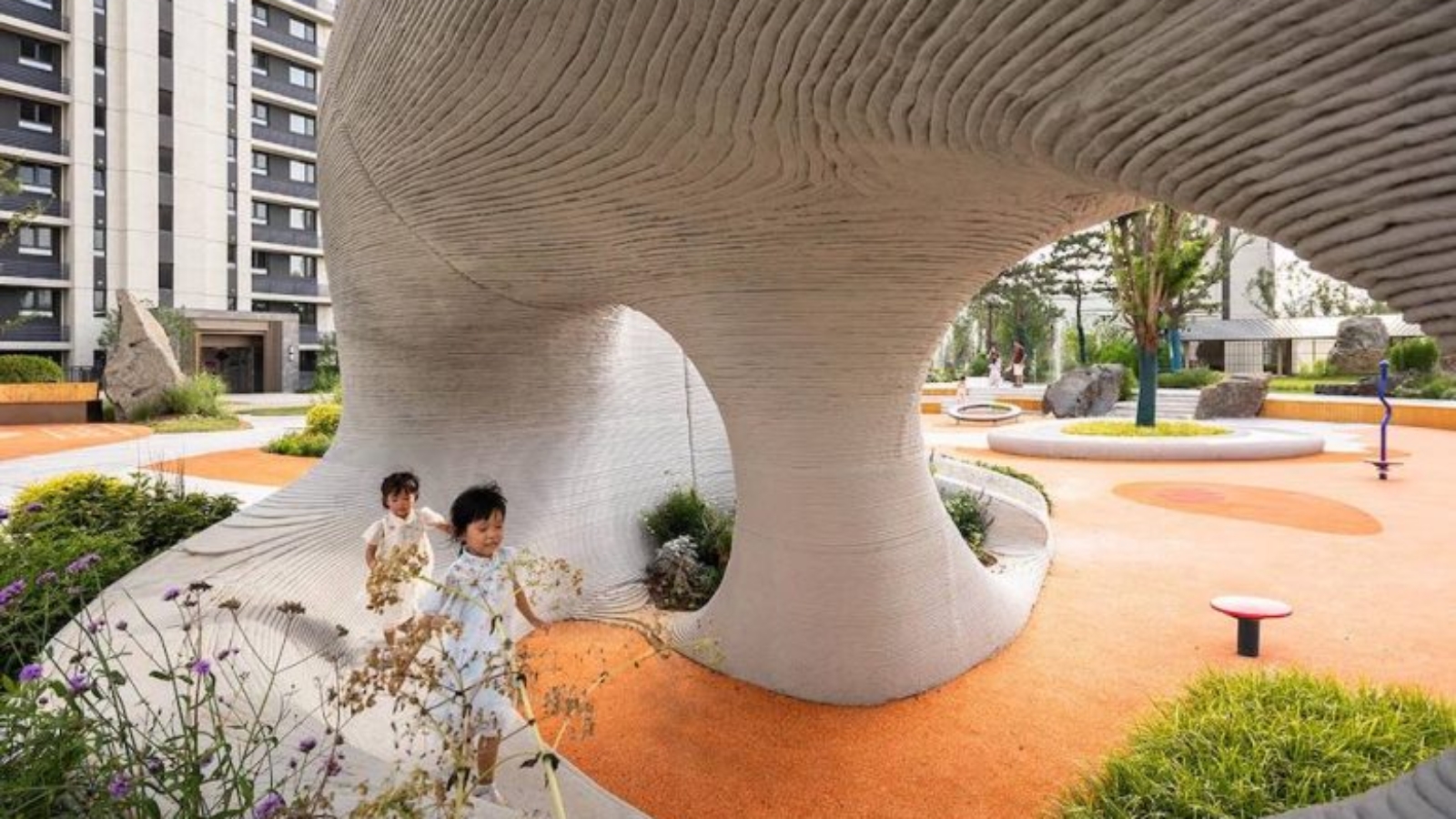Shanghai’s XISUI Design has created a 3D printed concrete playground in China’s Shandong Province. The 13,000-square-meter Boulder Park blends natural boulders with looming, contoured 3D printed structures that function as a rock cave adventure area.
The new 3D printed playground, which was completed on a budget of CNY 2.5 million ($350k), is situated in the middle of Yunwan Garden in Ji’nan. According to its designers, the step-stair effect of the printed concrete blends in naturally with the organic rock surrounding it. Additionally, the natural curves and smooth edges of the printed structures make them safe for play.

“Landscape structures and installations are often small in scale, with low load requirements and simple, clear functional needs,” said Hu Yihao, Lead Designer at XISUI. “In the application of 3D printed concrete technology, compared to architecture, landscape projects may have even more diverse usage scenarios.”
For the Boulder Park project, the XISUI team used robotic arm 3D printers from Guanli Tech of Hangzhou, Zhejiang Province. LuAnLu Partner Structure Consulting acted as structural consultant. Guanli Tech makes a range of gantry and robotic arm systems, including a mobile robotic arm system mounted on tracked treads. In addition to its printing hardware, it provides mixing and pumping systems, printable concrete materials and printing software. Last year, four of its construction 3D printers were used to make the world’s first partially 3D printed mosque in Jedda, Saudi Arabia.
Manufacturing on Demand

For this project, the large 3D printed sections of the concrete park are supported internally by steel rods and feature a low-density grid-style internal structure. Each section measures several meters in length, and these have been joined together to form the larger functional structures that can be walked and climbed upon.
“Although the current 3D concrete materials still face a series of challenges, such as uneven stress distribution and relatively simple reinforcement methods, the 3D printing materials used in Boulder Park have an average strength of 50MPA, surpassing the traditional C40 concrete strength standard,” Yihao explained.

For many years, China has been a hotbed of construction 3D printing activity, with notable companies like Shanghai’s Winsun regularly demonstrating large-scale architectural projects, particularly in the area of housing (last year, Winsun launched a U.S. subsidiary, Gaudi Tech). Elsewhere, the Slovakian capital Bratislava recently unveiled its first 3D printed bus stop, while researchers in Ukraine have experimented with 3D printable construction materials made from war debris. The 3D printed playground seen here is among one of the first finished applications of its kind (readers might remember a couple uses of construction 3D printing for building skateparks, notably at the 2024 Paris Olympics).
You might also like:
Züblin and Instatiq leverage concrete 3D printing at scale: The top floor of one of the four-storey buildings is printed directly on the construction site, using an Instatiq P1 concrete printer. The printed walls reach a height of up to three meters and a thickness of 16.5 to 19 centimeters. They are produced at a speed of up to 10 centimeters per second and have a maximum output of 2.5 cubic meters per hour.
* This article is reprinted from 3D Printing Media Network. If you are involved in infringement, please contact us to delete it.
Author: Tess Boissonneault


Leave A Comment